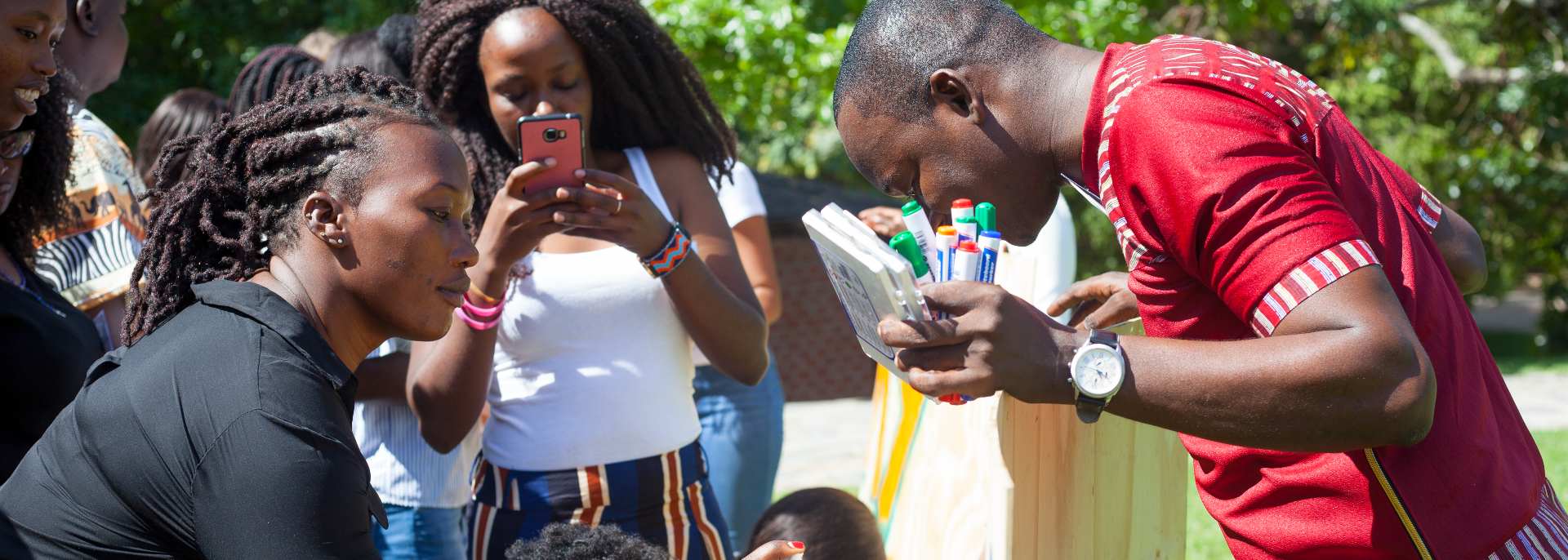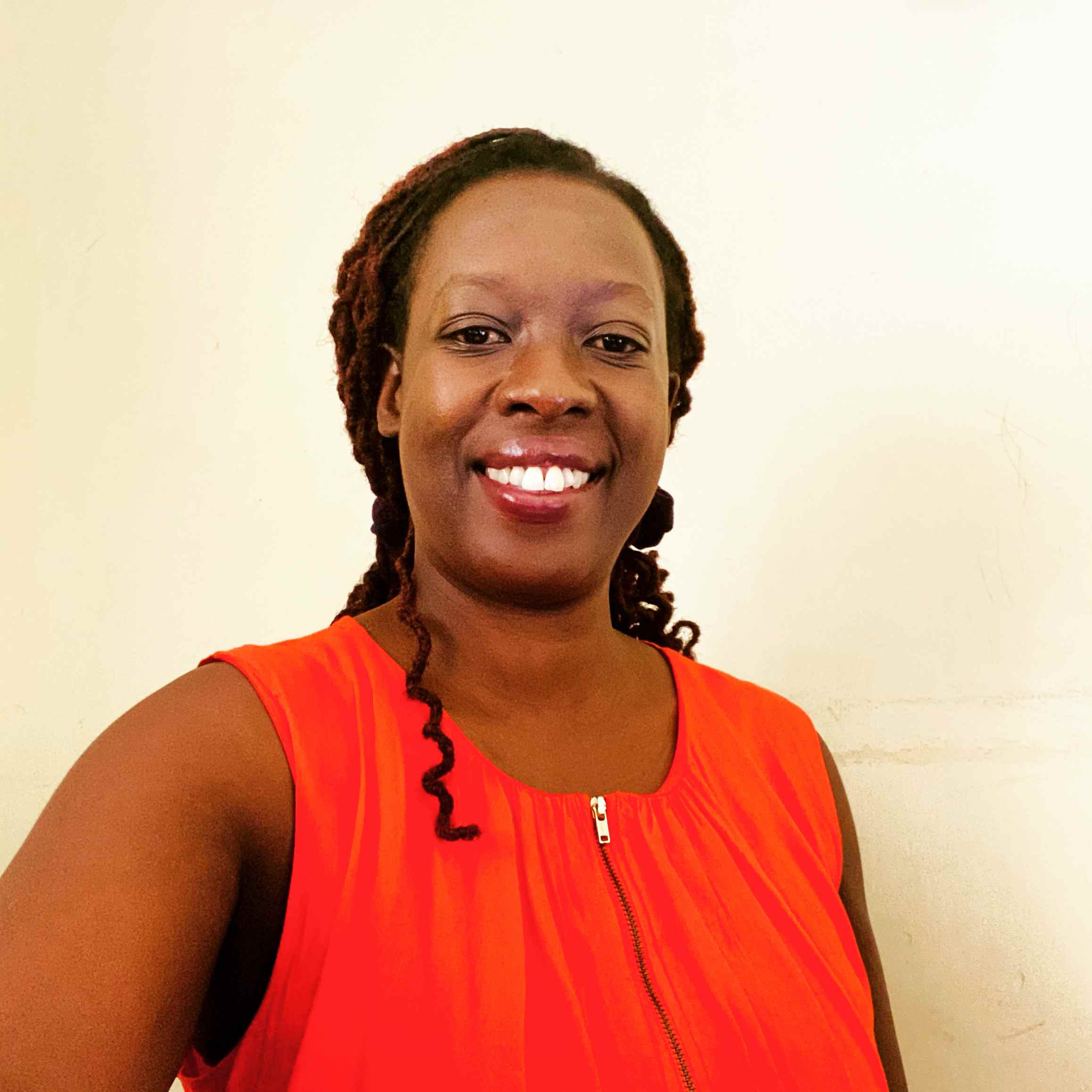Today, the 28th of September, we celebrate the International Day of Access to Safe and Legal Abortion. What started as a regional campaign in Latin America, has grown into a worldwide movement for the rights to make decisions about one’s own body and to access basic health care. We sat down with Lucy Minayo, Program Manager of Hivos’ newest sexual and reproductive health and rights (SRHR) program, We Lead, to discuss these pivotal issues.
Among girls aged 15-19 in low- and middle income countries, there are at least 10 million unwanted pregnancies per year. 5.7 million of those result in abortions. The majority of these are unsafe. Covid-19 disrupted many contraception services, leading to another 1.4 million unwanted pregnancies in 2020. Yet, it has been demonstrated time and time again that criminalizing abortion doesn’t decrease its numbers.
Lucy Minayo is no stranger to these statistics. She has years of experience in the sexual and reproductive health and rights field, and worked specifically on access to abortion. She’s campaigned at the pan-African level for the decriminalization of abortion, and strengthened advocacy and judicial capacity to tackle this.
I see it as the unfinished business in human rights.
Q: Why is access to safe and legal abortion important?
Lucy: “It strikes at the root of bodily autonomy. I see it as the unfinished business in human rights. We have advanced conversations on other aspects of sexual and reproductive and rights, like maternal and adolescent health; but there is a lot of reluctance to acknowledge bodily autonomy as an integral part to the dignity of a person. And it is important because a lot of individuals, especially those without any kind of privilege, are disadvantaged when it comes to accessing services. We need to make these services accessible, to reduce the deaths and disabilities that are associated with lack of access to these services.”
Q: Mexico decriminalized abortion in September this year, while the state of Texas in the United States banned abortion from six weeks and up. Do you feel we are moving backwards or forwards?
Lucy: “I feel we move a couple of steps forward, and then we move back. The US plays a very critical role, particularly in the Global South. They influence a lot of the global health programming; USAID is the largest funding of many governments in the Global South on health matters. Given the ping-ponging that happens between Democrat and Republican administrations and the policy positions they take, it influences how these policies play out in the countries.
But we have also made a lot of progress. We are now able to talk about abortion in public. Ten, fifteen years ago, abortion was a hushed conversation. We see a lot of positive changes, like in Latin America where Argentina legalized abortion. On the African continent, Mozambique recently passed a law that made abortion accessible. And in Asia, Nepal agreed to decriminalize abortion in line with recommendations made by the Human Rights Council during Universal Periodic Review in 2021. So the space is opening up, and there is a lot more empathy for women who want to have an abortion.”
Q: We Lead focuses on the SRHR of adolescent girls and young women who are affected by displacement, who live with HIV or a disability, and/or identify as lesbian, bisexual and transgender. How does access to abortion affect them?
Lucy: “For adolescents, the huge hurdle is just overcoming the questions around bodily rights. Third party authorization is the norm, and in many countries there is no recognition that they can make rational, consensual decisions.
There is also a big challenge with access to abortion for rightsholders affected by displacement. Most efforts focus on sexual violence; there is an assumption that sex in settings of displacement or conflict is restrained. But sex still happens, that is the reality. So access to services, in a context that is not informed by sexual violence, is still problematic for rightsholders in these settings.
Women and girls who identify as lesbian or bisexual, or transgender, face a lot of challenges in accessing health services too. Our health systems are not wired for individuals that fall outside the heteronormativity lens.
Women and girls with disabilities generally face a whole range of barriers. I recall a study I did two years ago in Kenya, which showed that information is not translated or is not available in means that a person with a visual or intellectual disability would be able to access. For the latter group, an additional challenge is the fact that they are often viewed as asexual. In the spectrum of disability, my experience has been that the marginalization is enhanced depending on the disability the individual has.”
Q: How are these rightsholders represented in the movement for access to safe and legal abortion?
Lucy: “When the abortion movement started, a lot of the rightsholders that we work with were invisible. It was driven by able-bodied individuals, heterosexuals, who were not necessarily underprivileged. We hardly ever hear stories about young women with a disability for example, who want to have an abortion, or people that have been affected by displacement. So I think in the initial stages of the movement, the adoption of a single, ‘one size fits all’ approach, inherently excluded other groups; and those are the rightsholders that we are working with.”
Q: How is We Lead planning to change this?
Lucy: “We are working with the rightsholders that have been excluded. We aim to strengthen their capacities to participate in conversations on SRHR, so they can be at the table when policies are being drafted, and can continue to infuse their perspectives into policies and lawmaking processes. We Lead does this through Communities of Action, where we bring together rightsholders and their organizations. We are not creating a new movement or a separate network. We want these rightsholders to be part of the movements that currently exist, to voice their perspectives and to engage directly with lawmakers.
One thing I hope We Lead can do is challenge the notion that health workers should always be at the center of abortion service provision. I find it problematic that we anchor the debate on abortion on an intermediary – the health worker – when we know that women can take care of their bodies. When you have a headache, you know when you should go to a hospital, take a paracetamol or just drink some water. But we treat abortion very differently from other health issues. I love the underground movements that are disrupting the abortion architecture, and really challenging the perception that it should be gynaecologists or nurses making or facilitating these decisions.”



